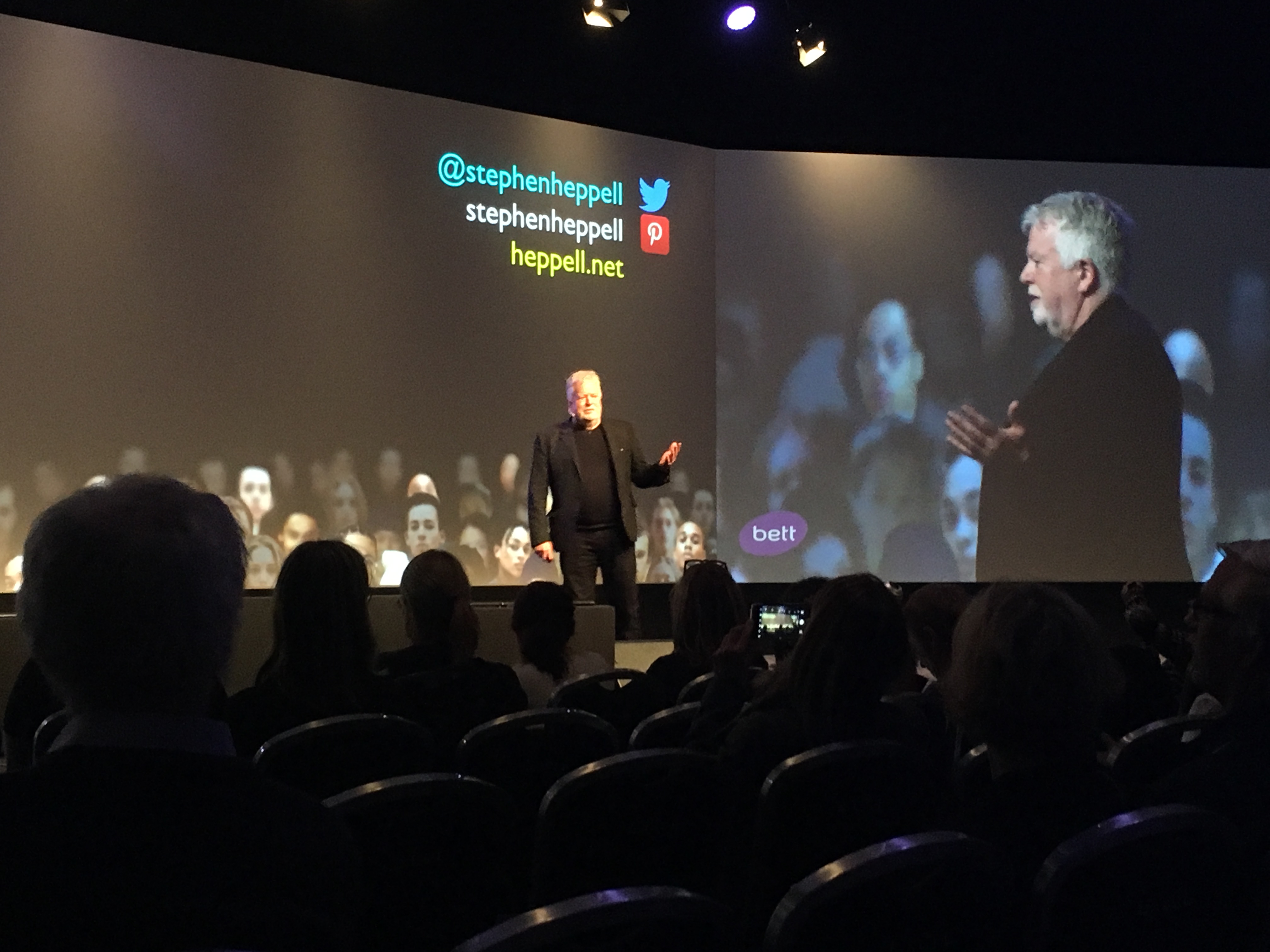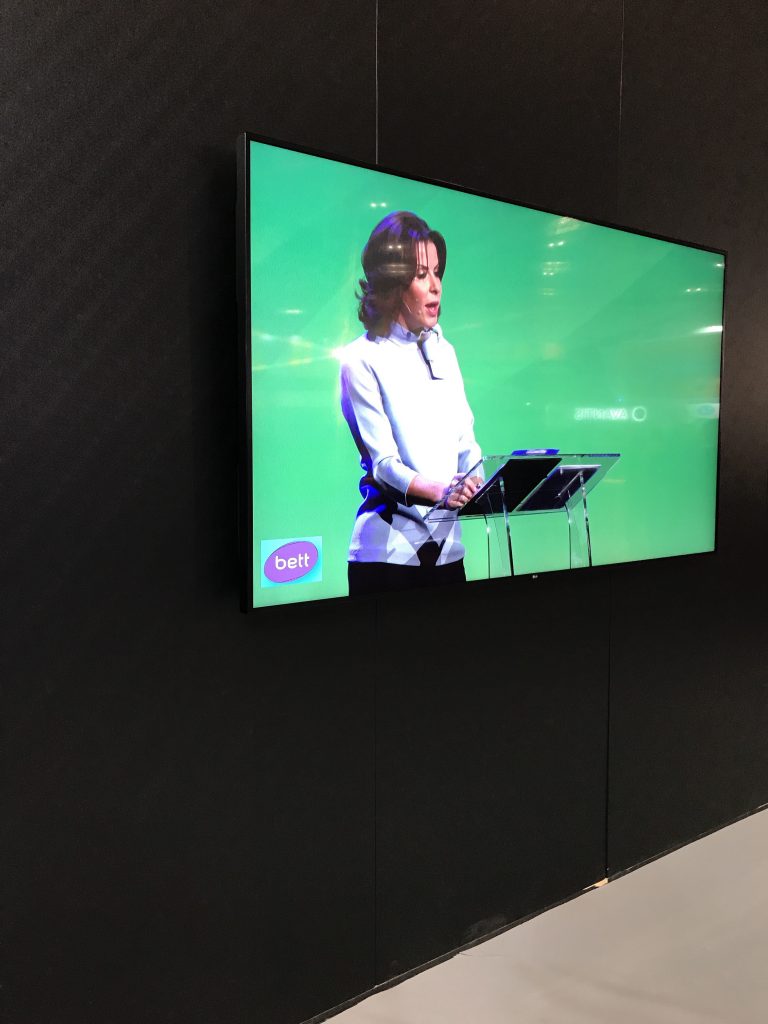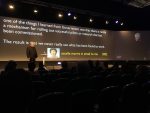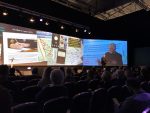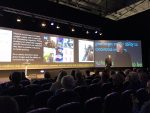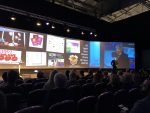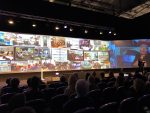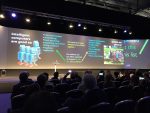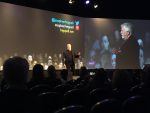Setting the scene
A comment often made about Bett, by me as much as any other visitor I’ve spoken to, is that it happens over such a vast scale that it’s quite difficult to take it all in. This year, however, as I was attending over two days, I had slightly more of an opportunity than usual to explore the stalls where start-ups and tech titans alike hawk their wares as technical solutions to all your educational problems. A futuristic bazaar at aircraft hangar scale, Bett is always a rush to experience and typically leaves one drained on exiting the ExCel centre that houses it, out east of the river.
I was convening a panel event on the ‘smart campus’ for the Friday afternoon, and was asked to come in on the Thursday before the exhibition opened for a brief rehearsal, to ensure things ran smoothly. It was good to be able to wander around the exhibition floor before the event opened to the public, as it gave me the chance to get some orientation in. Kudos to the organisers too, they’d clearly taken on board visitor feedback about the overwhelming nature of the event and put some thoughtful consolidation in to the visitor experience this year. For example, the number of additional stages where talks and seminars were held was condensed from last year’s 11 down to a much more manageable three.
My panel event was to be held in the ‘Post-16’ Theatre, a space designed to take in topics that related to higher education (HE), further education (FE), and sixth form – the stage, then, for discussing adult/young adult learning. HE has typically tended to be the poor cousin to other stages in the learning journey as represented at Bett, so the attempts at bringing HE more into the fold were appreciated. At a guess, I’d speculate that this is down to the difference between educational technology purchasing decisions at universities, which tend to be taken more at institutional scale rather than at classroom level and not that often, with the primary/secondary focus, which can be more easily done by individual schools, or even teachers themselves, and more often. Nevertheless, there has clearly been more of an effort to bring representation for universities under the Bett umbrella more recently. There was a lot of interest in what’s happening in HE learning spaces, for example, with City’s reputation in this area clearly now spreading across the sector.
Flaky wifi and shaken hands
After an even-earlier-than-usual start to my day, I nursed a coffee in the VIP Lounge while charging my phone and trying to connect to a nearby WiFi network. Flaky and unsecured WiFi is available across the venue, as provided by the venue itself rather than the event. I’m usually pretty uncomfortable hooking up to a network that doesn’t ask me for any form of authentication, as…well, you never know…so in the absence of a ‘must pull that email down as I’m trying to organise something’ moment, I’ll typically wait until I’m in range of something a bit more solid. There are plenty of stalls and rooms that will set up their own secured networks, so it’s typically a case of tracking down the ones that provide you with a password. It would be a pretty immense undertaking for the event team themselves to set up blanket secured WiFi across an area that large just for the purposes of the trade fair, but the result is that it can be quite difficult to engage with some of the core technologies and activities without it. One tip for the organisers for next year – if you want more tech-facilitated interactivity between speakers and audience in your sessions, put secured WiFi networks into your speaker theatres, at least!
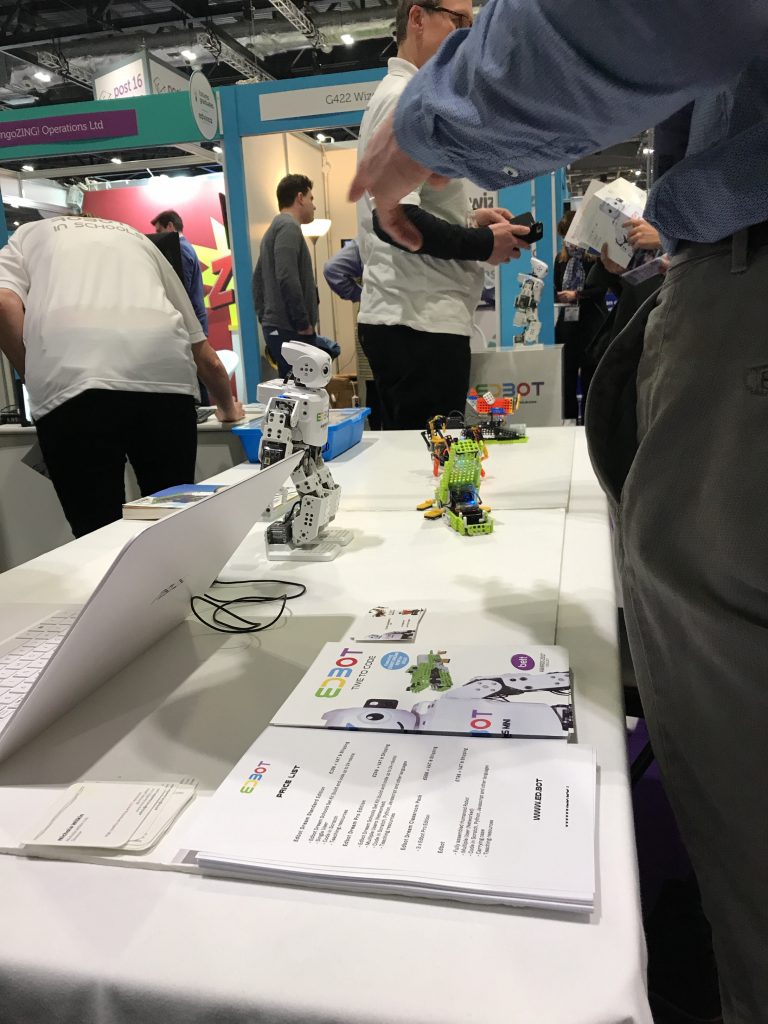
Still in the VIP lounge, I was approached by a clutch of confident primary schools pupils and had my hand firmly shaken by them, prior to their appearance on the big stage to give their thoughts on future technologies in schools for the Main Arena audience. Being the father of a daughter who was trying to pinch and zoom images on a static TV screen at one year old and who was using an interactive whiteboard at her nursery before she had learned to write, I’m already well aware of the density of technology in our young people’s lives. For someone with an eye on universities, Bett is therefore also an opportunity to get a sense of what’s in the pipeline. If our young people are growing up in educational environments crammed with robots, touchscreens, coding clubs, 3D printing and a dizzying array of digital systems, it gives us a pretty good indication of what the next generation’s expectations of their university environments are likely to be.
Tech themes
Rehearsal behind me, I could get on with wandering the aisles for a taste of other peoples’ visions of the future of learning. It’s a good opportunity to take the pulse of the edtech sector and see what’s en vogue, but also a chance to stumble across the downright curious. The Moscow City Department of Education had a stand offering full body scans that were used for generating virtual avatars of visitors. Personally, in this day and age, I wasn’t that comfortable with donating 3D versions of myself to the mercy of Russian servers, but plenty of others seemed perfectly happy to line up without so much as a peep at any T&Cs.
VR was one of the key themes to emerge, with everywhere you looked the chance of bumping into someone with a visor strapped to their faces, immersed elsewhere, including one (Avantis ClassVR) that featured both wireless streaming to a nearby monitor and the ability to create one’s own 360 degree content. At part of their stand, Avantis had permanent lines of people queuing up to virtually experience life in the First World War trenches. That’s certainly one way to make the teaching of history come alive. At the intersection between VR and learning spaces, there was an increase on last year of examples of immersive learning environments – most of which seem to be aimed at younger learners, although I have previously come across one example of an immersive learning environment being used in HE, with Kingston and St George’s, University of London‘s use of one for the training of paramedics.
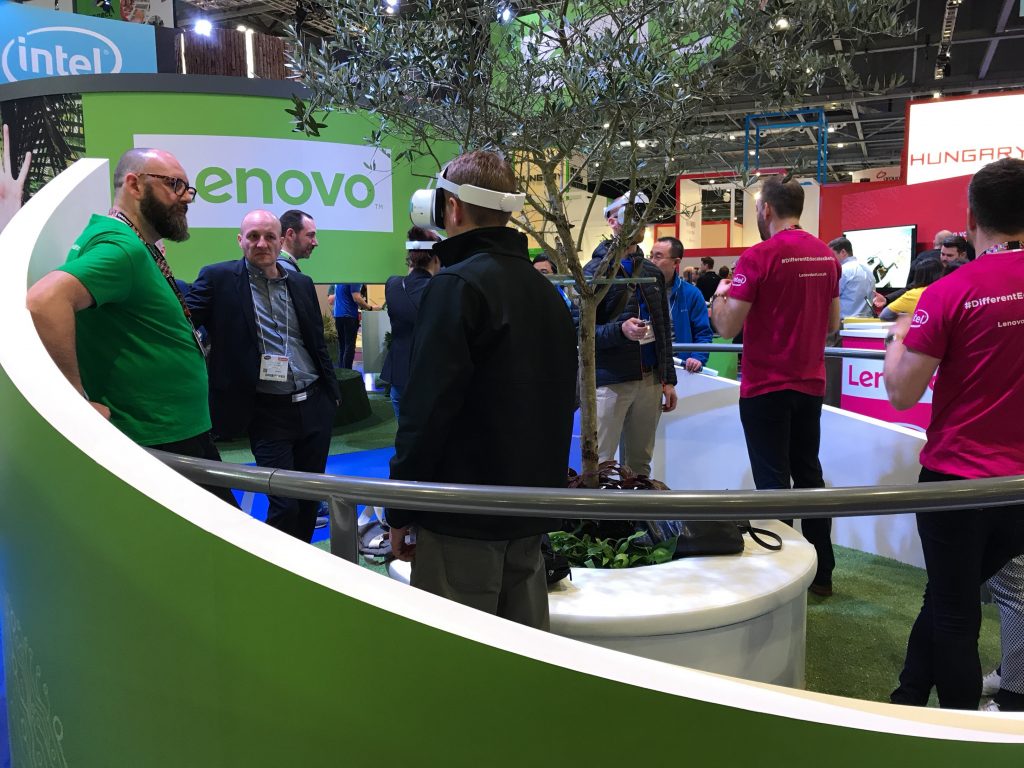
Underpinning most of my visits, I usually keep an eye out for any developments in the area of wireless collaboration. This is essentially about technologies that will facilitate the wireless sharing of content from mobile devices, which is a long term project I’ve been working on during my time at City. The technologies on offer in the education market were not particularly developed when I started visiting Bett, but they’ve clearly made good progress in the intervening years. I had some good discussions and demonstrations with vendors from AirServer and AirTame, although nothing that jumped out at me as ‘we must have this in City’s learning spaces’.
Workload Relief
Day Two kicked off for me in earnest when, on boarding the tube to get out East, I received notification of one of my speakers unfortunately having to pull out of the event. While going from three speakers on a two on a panel was not ideal, it was at least a Plan B. I was, however, determined to try and find a suitable replacement, if at all possible.
The one other talk that I particularly wanted to see on that day was by Professor Stephen Heppell, titled ‘Workload Relief’. After a word in the ear of the organisers, once I’d arrived, I managed to track Heppell done and ask him if he’d be prepared to step in to a spare slot on my panel debate on the smart campus. To my delight, he agreed. Having been an early influence on the development of City’s own learning spaces, this felt like a very fitting alignment of circumstances.
The first thing that struck me in the Main Arena, where Heppell was speaking, was the vast screen that spanned the width of the stage in this enclosed space. Seamlessly blending a very widescreen version of the session slides with live camera footage of the speaker, I tried to imagine preparing a slide deck to speak on a stage like that. Not possible with a standard, out-of-the-box PowerPoint template, that’s for sure.
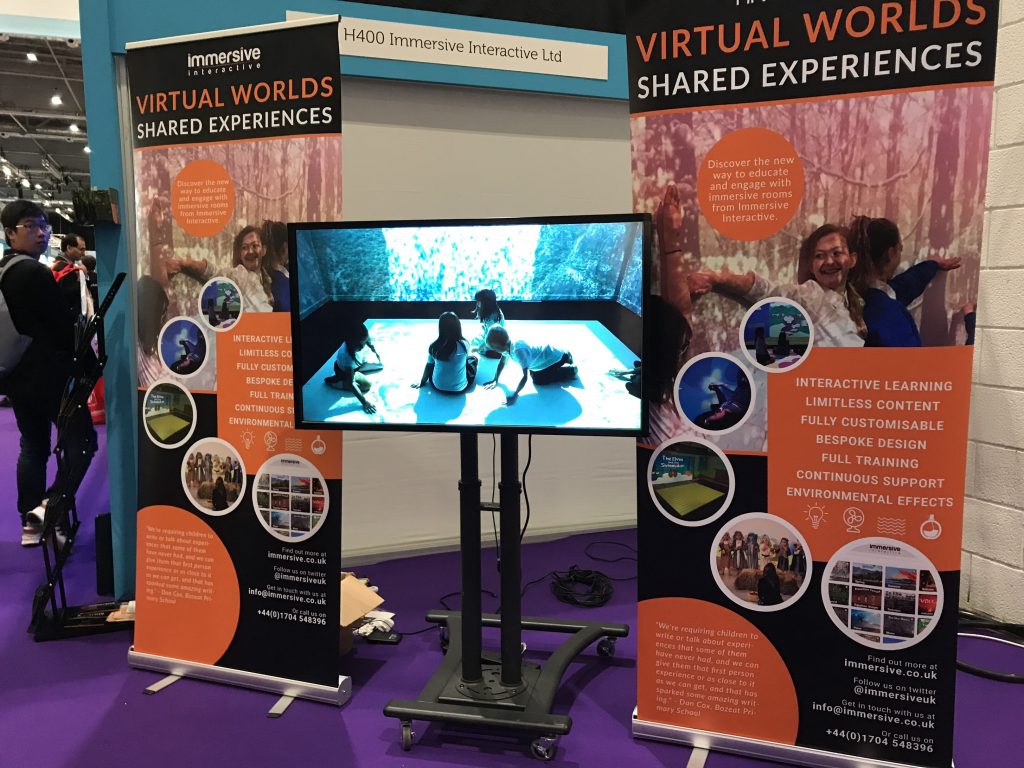
‘Workload Relief’ was clearly pitched at those that teach from across the educational spectrum, stating that while ‘no profession works harder than teachers’, Heppell was at Bett to give what he thought were three good reasons why the future is less exhausting, more enjoyable and rather different for the teaching profession than it is currently experienced as. The talk centred around various educational projects that he had been involved in and some key observations or reflections on those projects.
On the use of mobile devices in the classroom, Heppell implored teachers not to think of ‘How am I going to ban them?’ but of ‘How am I going to use them?’, suggesting that rather than being devices used by students as distractions from disengaging teaching, their unique affordances can be harnessed for enhanced teaching and learning experiences.
Referring to an example where a slide had been installed as a means of exiting a childrens’ library (which ensured a significant rise in library visits by the students), he described movement itself as contributing to ‘cognitive acceleration’. The obvious implication for HE here is that even a little bit of getting students out of their seats and moving around can help with engaging with lecture material where students might remain otherwise sedentary for the duration of the timetabled session.
Looking forward
Heppell talked about a project where an HE learning space was designed by secondary school students, and where they prototyped the space in cardboard and on-screen, then 3D-printed furniture models for the lecturers. The final space that was built was actually pretty faithful to the vision that the students had developed. How often in HE do we closely involve our own students in the design and development of their learning spaces?
The question of the impact of educational development or enhancement projects was raised. Often, such projects are not easily measured or even measurable in terms of their direct and immediate impact on learning itself, but Heppell suggested that the ‘aggregation of marginal gains’ really did make a difference – small projects might not seem like much on the surface of things, but cumulatively, they mattered. He advised teachers to go with things or ideas that are heading in a direction that they care about, or more simply put, ‘if you care about something, try it out’ as under these conditions ‘everything works’.
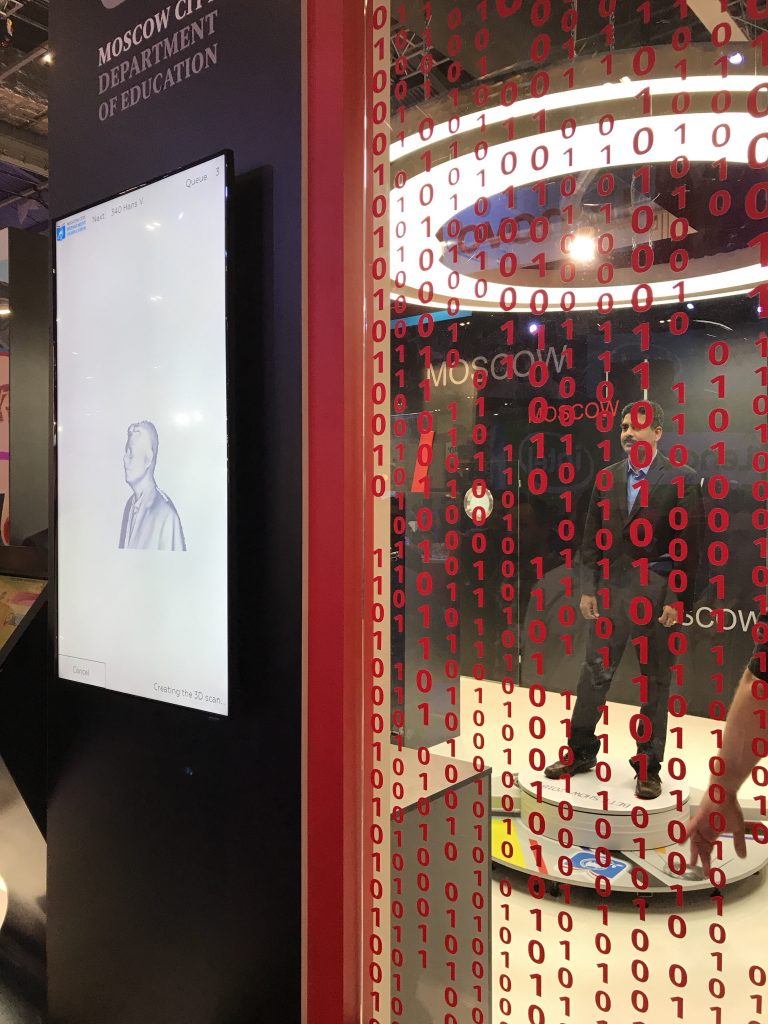
Having looked back at various projects that he’d been involved in, the presentation wrapped up with a look to the future. Heppell stated that he’s not a techno-determinist, so doesn’t believe that the outcome of certain new technologies on education is pre-set. He did, however, mention two technologies that could be considered as ‘coming next’ and which will eventually affect education in some way.
The first was quantum computing, a technology still very much its infancy. He suggested that as the power of quantum computers will be immense, the primary challenge for educationalists is likely be thinking what they would like to do with them. I’d certainly not previously considered quantum computers as educational technologies, and must admit that I have no idea what impact they might have at this stage!
The other was blockchains, which originated as a decentralised ledger behind the digital currency bitcoin. Some of blockchains’ biggest advocates in finance believe that these technologies can replace central banks, and Heppell described them as ‘a disaggregation of governance’, the opposite of the multi-academy trust model currently in vogue in British primary and secondary education. If educational institutions could be run on radically decentralised models, that would undoubtedly have significant implications for teaching and learning. As with quantum computing, quite what impact they would have is near impossible to imagine at this stage in their development, but it was certainly thought provoking to consider these developments which are well beyond the oeuvre of ‘traditional’ educational technologies.
Heppell ended almost with a pair of rallying cries. ‘Your kids (students, and presumably, own children) are the ones that can help you’ with getting to grips with the future was one of them. The other was one of perspective, that despite all the difficulties and challenges besieging British educationalists, ‘no-one’s bombing your children, you’re living in peace, so do something with it’.
A contentious conclusion, perhaps? The only way I can follow that is to say that if you enjoyed this post, come back next week for Part Two, which looks at my panel session on the smart campus.
